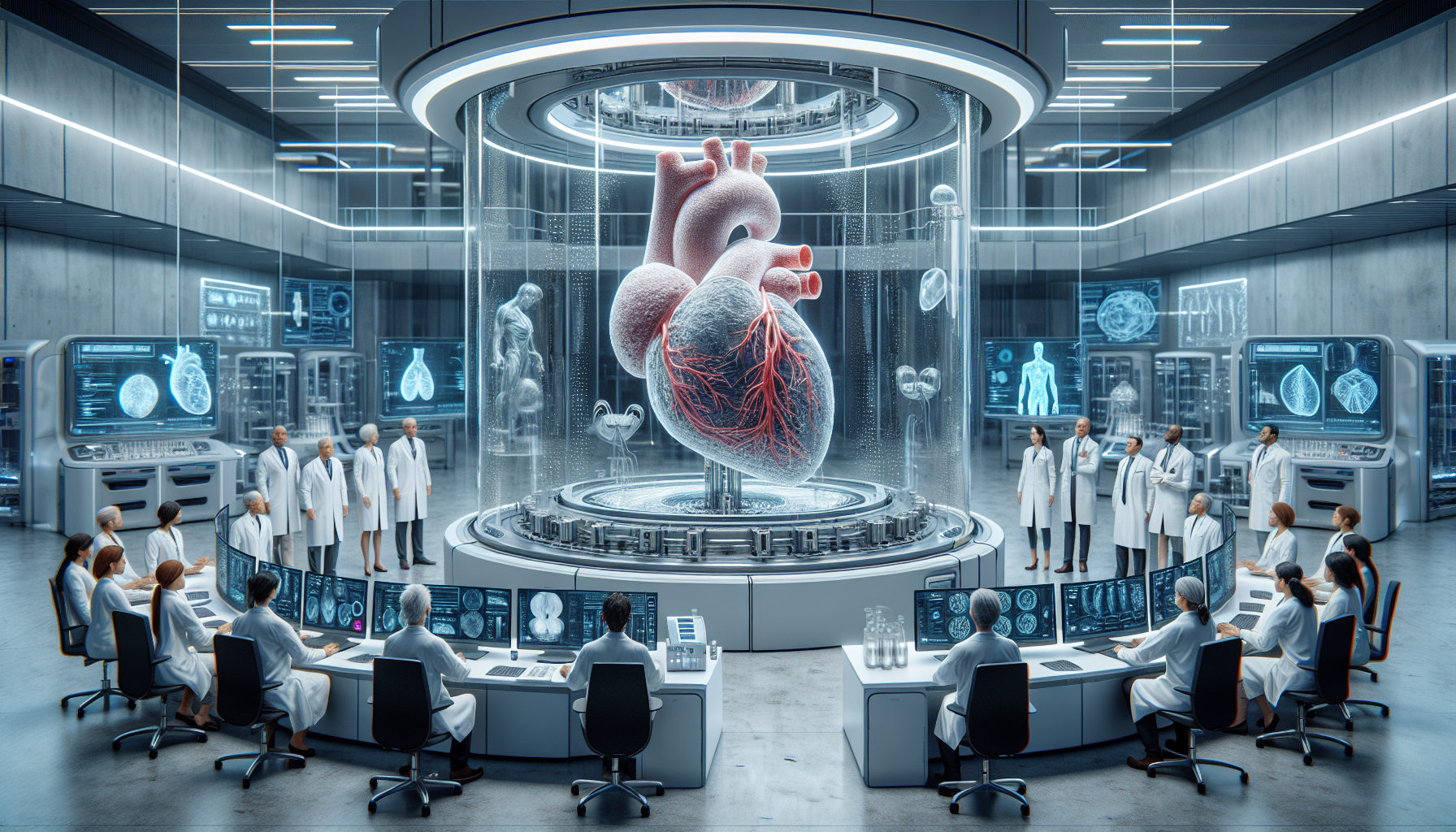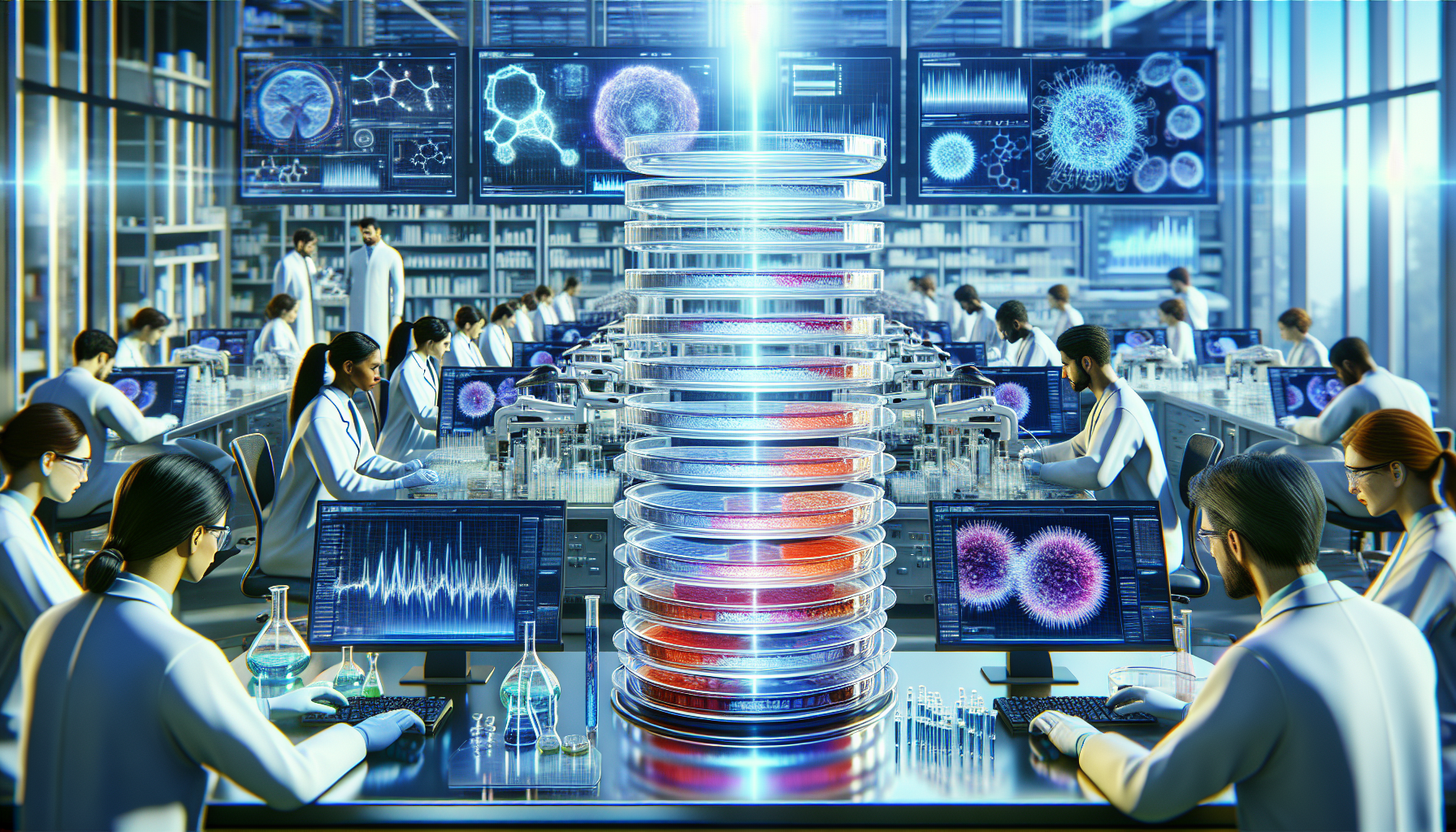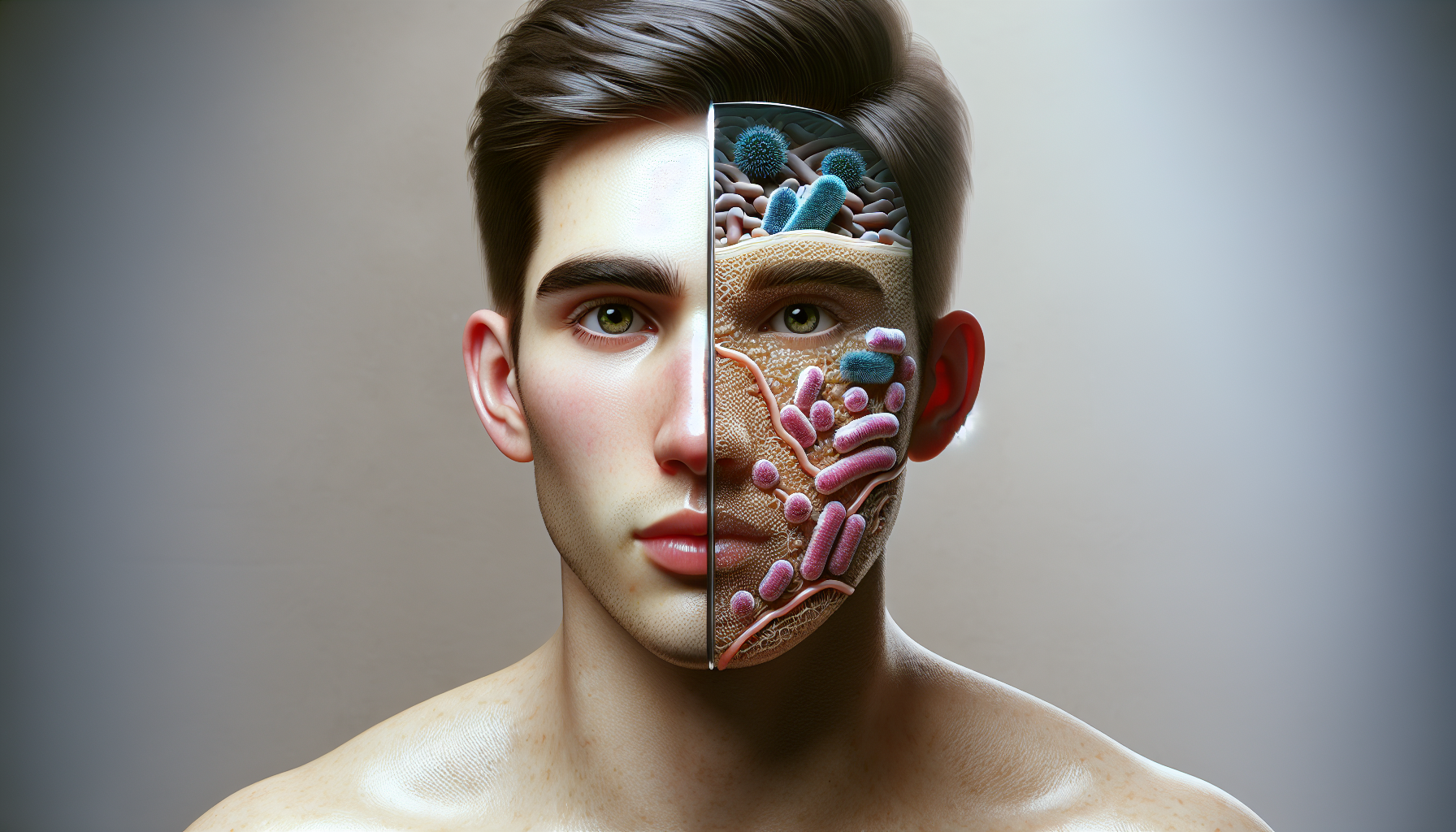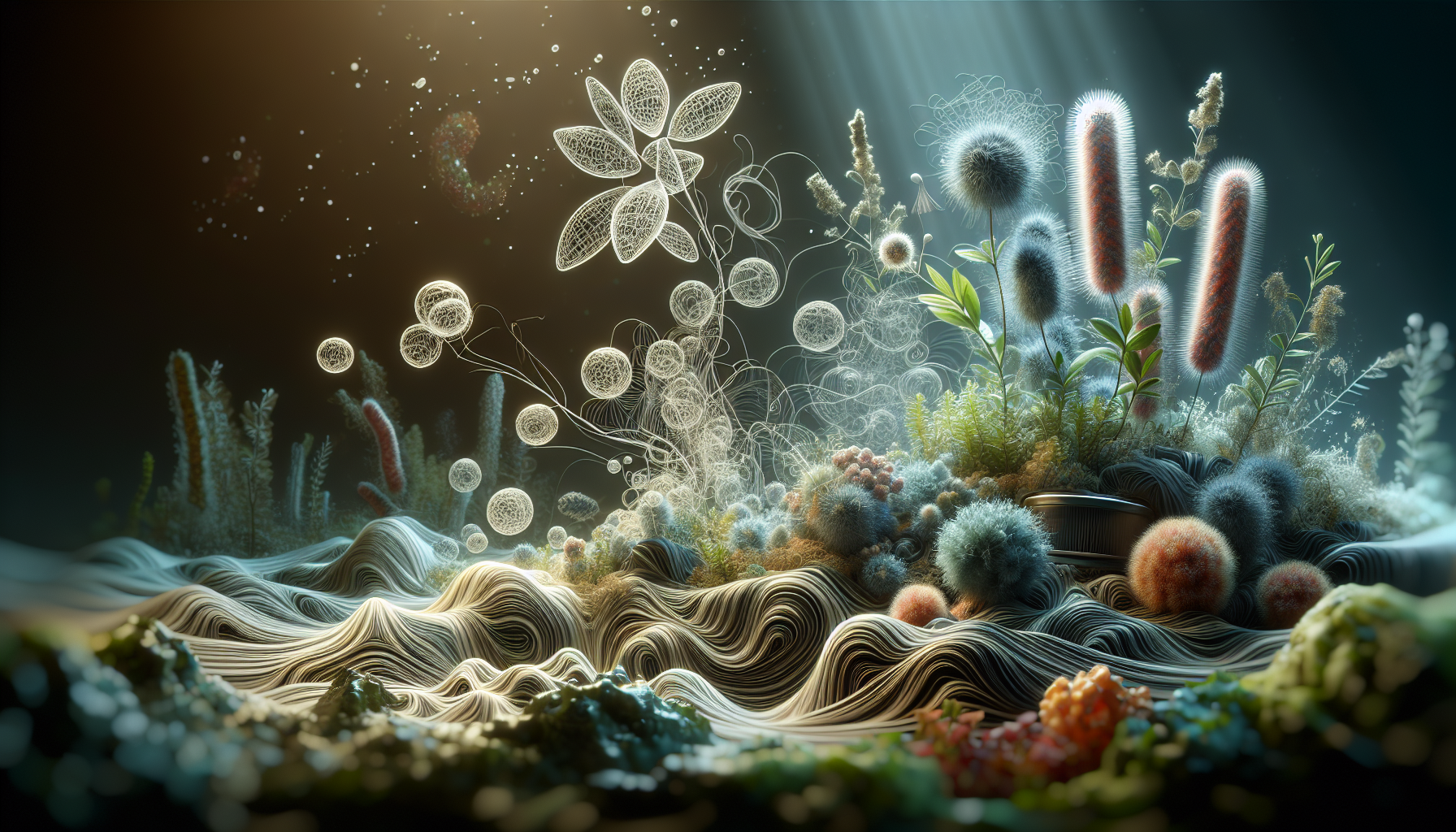In the rapidly evolving world of healthcare, innovation is the heartbeat that propels the industry forward, and few advancements hold as much promise as 3D bioform printing. Imagine a future where waiting for organ transplants is a thing of the past, where medical treatments are tailored to the unique genetic makeup of each individual, and where the phrase “one size fits all” is obsolete in the medical lexicon. This is not just a vision for the distant future but an emerging reality, thanks to the groundbreaking field of 3D bioform printing. As we stand on the precipice of this medical revolution, the convergence of biology and technology is not only reshaping how we approach treatment but also redefining the possibilities of personalized medicine. 🌟
At its core, 3D bioform printing is a sophisticated process that involves creating three-dimensional structures using living cells. These bioprinted structures can range from simple tissues to complex organs, each designed to mimic the natural architecture and function of their biological counterparts. The implications of this technology are staggering: from reducing the dependency on donor organs to providing customized solutions for patients with unique medical conditions, 3D bioform printing is set to revolutionize the landscape of healthcare. In this article, we will explore how this cutting-edge technology is not just a concept but a transformative tool that is being actively developed and implemented in research labs and hospitals around the world.
As we delve deeper into the topic, we will examine the current state of 3D bioform printing technology and its applications in various medical fields. The article will highlight real-world examples of how bioprinting is being used today, such as in the creation of skin grafts for burn victims, the production of cartilage for joint repair, and even the development of complex organ structures like kidneys and hearts. We’ll also discuss the scientific principles underlying this technology, including the types of biomaterials used, the printing techniques employed, and the challenges that researchers face in ensuring the viability and functionality of bioprinted tissues. 🧬
Finally, we’ll turn our gaze toward the horizon, considering the future implications of 3D bioform printing in personalized medicine. This section will address how this technology could enable more precise and effective treatments by allowing for the customization of medical solutions at the cellular level. We’ll discuss the ethical and regulatory challenges that accompany such advancements, exploring how the medical community is addressing these concerns to ensure the safe and equitable implementation of bioprinting technologies. By the end of this article, you will not only have a comprehensive understanding of 3D bioform printing but also a newfound appreciation for the profound impact it will have on the future of healthcare. Let’s embark on this journey into the realm of medical innovation, where the lines between science fiction and reality continue to blur. 🚀
The Promise of 3D Bioform Printing in Modern Medicine
3D bioform printing, a groundbreaking innovation in the healthcare industry, is set to revolutionize the future of personalized medicine. This technology offers the promise of producing living tissues, organs, and other biological structures directly from digital models, with applications ranging from organ transplantation to drug development. With the potential to address the shortage of organ donations and create patient-specific treatment plans, 3D bioform printing represents a significant leap forward in medical science.
The concept of 3D bioform printing is rooted in the broader field of 3D printing, which involves creating three-dimensional objects from a digital file, layer by layer. In the medical context, this technology uses bioinks—composed of living cells and biocompatible materials—to fabricate complex biological structures. As the technology advances, it holds the promise of fabricating organs with precision and complexity that matches natural human tissues, potentially transforming the landscape of organ transplantation and regenerative medicine.
The Science Behind 3D Bioform Printing
At the core of 3D bioform printing is the use of bioinks, which are carefully engineered to mimic the natural extracellular matrix that supports cell growth and differentiation. These bioinks are loaded into a 3D printer, which deposits them layer by layer to build the desired biological structure. The composition of bioinks can be tailored to suit specific cell types and applications, enabling the creation of tissues with varied functions, from skin grafts to vascular structures.
The printing process itself relies on several techniques, each suited to different applications and material properties. Inkjet-based bioprinting, for example, offers high resolution and precision, making it suitable for creating intricate structures like blood vessels. Extrusion-based bioprinting, on the other hand, is ideal for fabricating larger, more robust tissues. Additionally, laser-assisted bioprinting provides the ability to manipulate cells with extreme accuracy, a crucial feature for creating complex tissue interfaces.
To ensure the functionality and viability of printed tissues, post-processing steps are critical. These include the maturation of the printed structure in bioreactors, which provide the necessary mechanical and biochemical cues to promote tissue development and integration. As research progresses, the integration of advanced imaging techniques and computational models is enhancing the precision and reliability of 3D bioform printing, paving the way for its broader application in clinical settings.
Applications of 3D Bioform Printing in Healthcare
3D bioform printing is poised to impact a wide array of medical fields, offering new solutions to longstanding challenges. One of the most immediate applications is in regenerative medicine, where printed tissues can be used to replace or repair damaged organs and tissues. This approach has the potential to transform the treatment of conditions such as liver cirrhosis, heart disease, and diabetes by providing custom-engineered tissues that restore normal function.
Another promising application is in the field of drug development and testing. Traditional drug testing methods often rely on animal models or static cell cultures, which may not accurately predict human responses. 3D bioform printing allows for the creation of organ-on-a-chip systems that replicate human organ functions, providing a more reliable platform for testing drug efficacy and toxicity. This advancement not only accelerates the drug development process but also reduces the reliance on animal testing.
Furthermore, 3D bioform printing holds the potential to revolutionize cosmetic and reconstructive surgery. By creating patient-specific implants and grafts, surgeons can achieve better aesthetic and functional outcomes. For instance, customized bone grafts and facial implants can be printed to match the patient’s anatomy precisely, reducing recovery times and improving overall satisfaction. In the realm of prosthetics, 3D bioform printing enables the creation of highly personalized and functional prosthetic limbs that enhance the quality of life for amputees.
Comparative Analysis of 3D Bioform Printing Techniques
To understand the strengths and limitations of various 3D bioform printing techniques, it’s essential to examine them comparatively. The table below highlights key aspects of different bioprinting methods:
| Technique | Resolution | Material Compatibility | Speed | Applications |
|---|---|---|---|---|
| Inkjet Bioprinting | High | Limited to low-viscosity bioinks | Fast | Small structures, organ models |
| Extrusion Bioprinting | Moderate | Wide range, including high-viscosity bioinks | Moderate | Large tissues, bone grafts |
| Laser-Assisted Bioprinting | Very High | Varied, precise cell placement | Slow | Complex tissues, high precision structures |
Check out the video below for a visual explanation of these techniques and their applications: “Revolutionizing Healthcare with 3D Bioform Printing” by Future Tech Channel.
Challenges and Future Directions
While 3D bioform printing holds immense promise, several challenges must be addressed to realize its full potential. One of the primary hurdles is the need for robust and reliable bioinks that can support cell viability and function over extended periods. Developing bioinks that closely mimic the native tissue environment remains a critical area of research. Additionally, the scalability of 3D bioform printing must be improved to accommodate the production of larger and more complex tissues.
Another significant challenge is ensuring the regulatory approval and standardization of bioprinted tissues and organs. As this technology advances, regulatory bodies will need to establish clear guidelines to ensure the safety and efficacy of 3D printed medical products. Collaborations between researchers, industry leaders, and regulatory agencies are essential to navigating these complex regulatory landscapes.
The integration of advanced technologies, such as artificial intelligence and machine learning, is expected to play a pivotal role in the future of 3D bioform printing. These technologies can enhance the design and optimization of bioinks, improve the precision of the printing process, and facilitate the development of complex tissue architectures. As the field progresses, interdisciplinary collaboration will be key to overcoming technical barriers and unlocking new applications in personalized medicine.
- Enhancing bioink development for improved cell viability.
- Addressing scalability challenges for larger tissue fabrication.
- Establishing regulatory frameworks for bioprinted products.
- Integrating AI and machine learning to optimize printing processes.

Conclusion
Conclusion: Embracing the Future of Healthcare with 3D Bioform Printing
As we reach the conclusion of our exploration into the revolutionary world of 3D bioform printing and its profound implications for personalized medicine, it is essential to revisit the pivotal insights that have been uncovered throughout this article. The journey into this innovative technology reveals not just a glimpse into the future but offers a transformative vision of how healthcare can evolve to meet the unique needs of every individual. 🌟
At the heart of this discussion lies the remarkable ability of 3D bioform printing to engineer tissues and organs with unprecedented precision. This technology transcends traditional limitations by allowing for the creation of biological structures tailored to individual genetic and biological profiles. By utilizing biocompatible materials and sophisticated printing techniques, 3D bioform printing is poised to revolutionize transplant medicine, offering new hope to patients waiting for organ donations. The reduction of transplant rejection risks, as personalized tissues match the recipient’s biology, marks a significant leap forward.
Moreover, this technology is instrumental in the advancement of regenerative medicine. By harnessing the power to print skin grafts, bone replacements, and even vascular structures, 3D bioform printing is not only enhancing healing processes but also accelerating recovery times. This shift towards personalized treatment options underscores a future where medical interventions are as unique as the patients themselves.
Beyond its medical applications, the influence of 3D bioform printing extends into pharmaceutical development. The capacity to create customized drug delivery systems tailored to an individual’s metabolism and genetic makeup promises to enhance therapeutic efficacy while minimizing side effects. This personalized approach signifies a move towards more effective and patient-centric treatments, optimizing health outcomes across diverse populations.
However, the journey is not without its challenges. Ethical considerations surrounding the manipulation of biological materials and the implications of bioprinting technology require careful deliberation. The path forward necessitates a collaborative effort involving scientists, ethicists, policymakers, and the public to ensure that advancements are guided by principles that prioritize human dignity and safety.
Despite these challenges, the potential benefits of 3D bioform printing in personalized medicine are too significant to ignore. As the technology continues to mature, it holds the promise of making healthcare more equitable and accessible, bridging gaps that have long existed in the medical field.
In reflecting on the transformative power of 3D bioform printing, it is clear that this technology is not just a scientific breakthrough but a catalyst for a broader shift towards a more personalized, efficient, and compassionate healthcare system. The implications of this advancement stretch beyond the confines of laboratories and hospitals, touching the lives of individuals worldwide.
To stay informed and engaged with the latest developments in 3D bioform printing and personalized medicine, consider exploring resources such as NIH 3D Bioprinting and Nature’s Bioprinting Insights. These platforms provide valuable insights and updates on the evolving landscape of this cutting-edge technology.
As we embrace the future, it is crucial to foster a community that values innovation and collaboration. Share this article with colleagues, friends, and anyone interested in the future of healthcare. Engage in discussions, ask questions, and explore how you can contribute to the advancement of personalized medicine in your professional and personal life.
In conclusion, 3D bioform printing is not merely a technological marvel; it is a beacon of hope, illuminating the path towards a more personalized and inclusive healthcare future. Let us continue to champion innovation, informed by ethics and empathy, as we stride confidently into this exciting new era. Your thoughts and contributions are invaluable as we collectively shape a healthier tomorrow. 💡
Feel inspired? We welcome your comments and insights on this transformative journey. Together, we can shape a future where healthcare is truly personalized, effective, and available to all.
Toni Santos is a visual explorer and microscopic storyteller who delves into the hidden aesthetics of microbial life. Through a fusion of scientific curiosity and artistic insight, Toni transforms the overlooked world of bacteria, fungi, and cellular forms into mesmerizing visual narratives—revealing the elegance, symmetry, and chaos that thrive at microscopic scales.
Rooted in a fascination with life forms too small to see yet too intricate to ignore, Toni’s work captures the bizarre beauty of microbial colonies, biofilms, and spore patterns. These images aren’t just representations—they are celebrations of the artistic intelligence encoded in nature’s tiniest architects.
With a background in visual design and bio-inspiration, Toni merges scientific imaging techniques with creative expression, transforming petri dish cultures, fluorescence microscopy, and microbial textures into works that provoke both wonder and contemplation.
As the creative force behind Vizovex, Toni offers curated visual studies, microbial-inspired designs, and essays that bridge art and microbiology—inviting viewers to reimagine what beauty means at the edge of perception.
His work is a tribute to:
The hidden geometries of living systems
The surprising elegance of microbial growth
The role of micro-life in shaping visual culture
Whether you’re a scientist, artist, or simply curious about the unseen world that sustains us, Toni opens a window into a universe where life writes poetry in colonies and patterns, one microbe, one frame, one breathtaking detail at a time.





